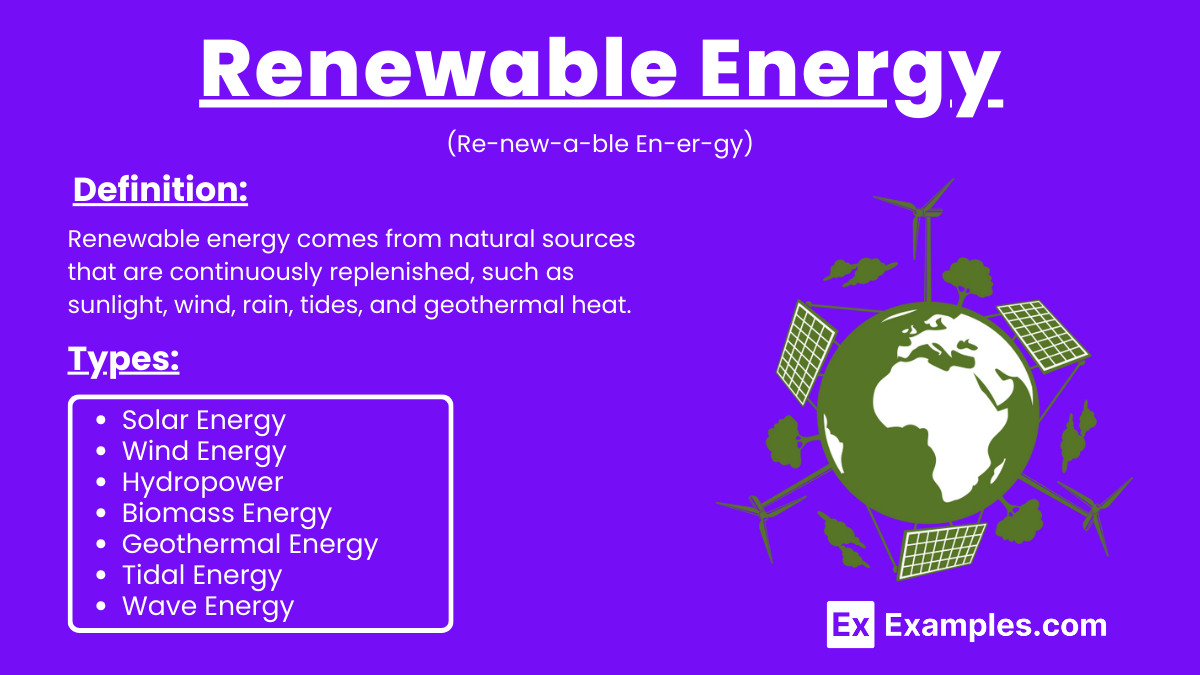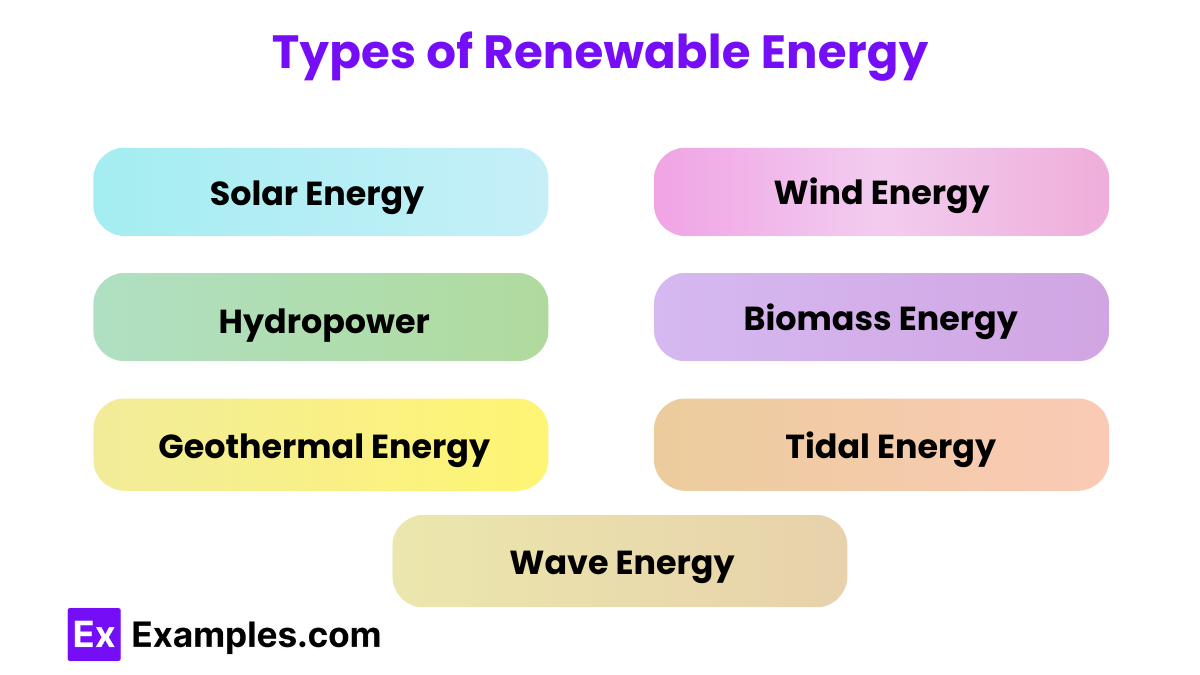What is renewable energy?
Energy that is non-replenishable
Energy that comes from non-natural resources
Energy that is replenished naturally
Energy produced from fossil fuels


Renewable energy comes from natural sources that replenish quickly, such as solar, wind, hydro, geothermal, and biomass energy. These renewable resources are sustainable alternatives to non-renewable resources like fossil fuels. Solar energy uses sunlight, wind energy captures wind, hydroelectric power utilizes flowing water, geothermal energy taps Earth’s heat, and biomass energy comes from organic materials. Transitioning to renewable energy reduces emissions, combats climate change, and enhances energy security. Investing in renewable technologies fosters job creation, economic growth, and conserves natural resources for the future.
Renewable energy comes from natural sources that are continuously replenished, such as sunlight, wind, rain, tides, and geothermal heat. Unlike fossil fuels, these sources are sustainable and emit little to no greenhouse gases. Renewable energy is essential for reducing carbon footprints and combating climate change by providing cleaner, sustainable power.

Solar panels convert sunlight into electricity using photovoltaic cells, which produce an electric current when exposed to sunlight.
Hydropower plants use flowing water to spin turbines connected to generators, producing electricity.
Geothermal energy harnesses heat from within the Earth to generate electricity and provide heating.
Biomass energy comes from organic materials like wood, crop waste, and manure, which are burned or converted into biofuels.
Wind energy is clean, renewable, reduces greenhouse gas emissions, and can provide energy independence.
While challenging, a combination of renewable energy sources can significantly reduce reliance on fossil fuels.
Intermittency, high initial costs, and the need for infrastructure improvements are key challenges.
It has a lower environmental impact than fossil fuels, reducing air and water pollution and habitat destruction.
With advancements in technology and policy support, renewable energy is expected to play a major role in future energy systems.
Individuals can install solar panels, support green energy programs, and reduce energy consumption.
Text prompt
Add Tone
10 Examples of Public speaking
20 Examples of Gas lighting
What is renewable energy?
Energy that is non-replenishable
Energy that comes from non-natural resources
Energy that is replenished naturally
Energy produced from fossil fuels
Which of the following is considered a renewable energy source?
Coal
Oil
Solar power
Natural gas
What is the primary advantage of renewable energy sources?
They are cheaper than all other energy sources
They are unlimited and sustainable
They require no maintenance
They are more powerful than fossil fuels
Which of the following is an example of biomass energy?
Burning coal for electricity
Using solar panels to generate electricity
Using plant material and animal waste for fuel
Generating power from wind turbines
How does wind energy generate electricity?
By burning fuel to produce heat
By converting kinetic energy from wind into mechanical energy
By using nuclear reactions to generate heat
By using solar panels to absorb sunlight
Which of the following is a disadvantage of solar energy?
It is not effective during cloudy days or at night
It produces harmful emissions
It requires a large amount of water
It is more expensive than nuclear energy
What is the main benefit of using hydropower?
It is dependent on fossil fuels
It can only be used in desert regions
It produces a steady and reliable source of energy
It has high greenhouse gas emissions
What is geothermal energy?
Energy derived from the Earth's internal heat
Energy generated from ocean tides
Energy produced by burning wood
Energy generated from wind turbines
Which renewable energy source is most commonly used for electricity generation worldwide?
Solar energy
Wind energy
Hydropower
Geothermal energy
Which of the following renewable energy sources has the potential to generate electricity 24 hours a day?Solar energy
Solar energy
Wind energy
Hydropower
Geothermal energy
Before you leave, take our quick quiz to enhance your learning!

